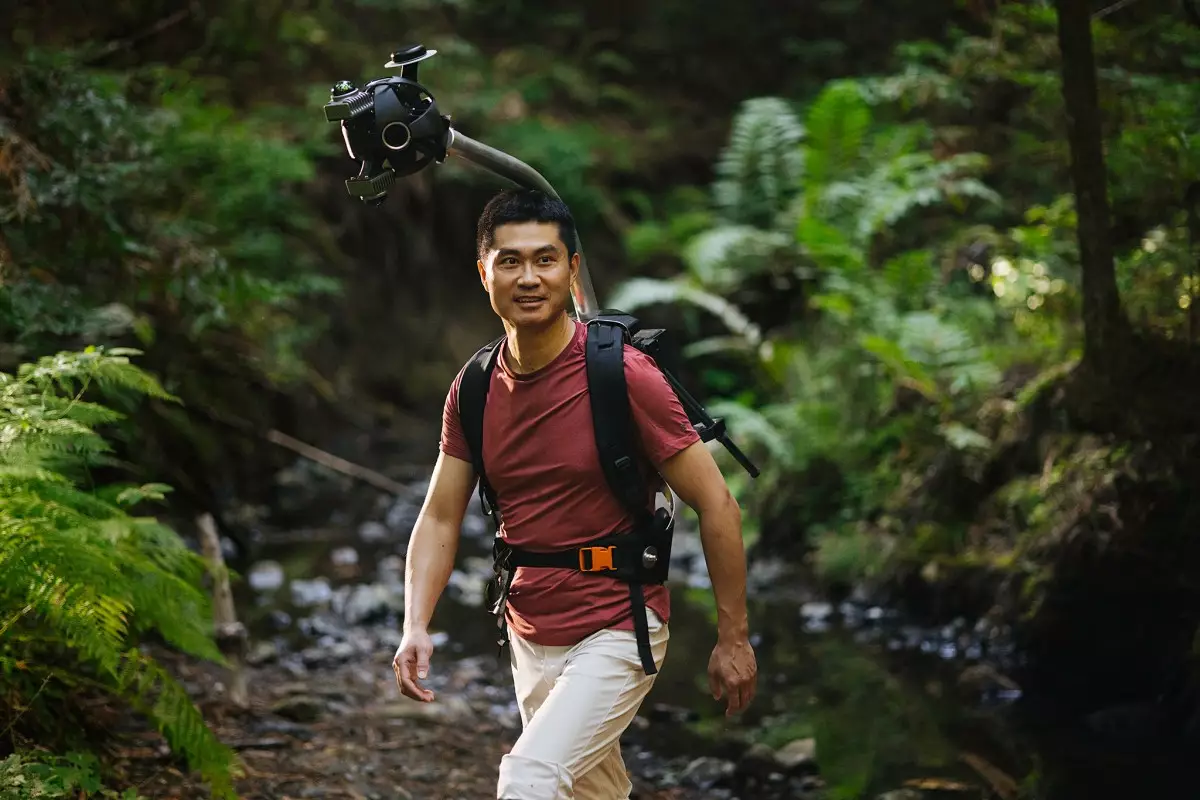In recent years, artificial intelligence has rapidly transformed various domains, from healthcare to finance, but one area striving for breakthrough advancements is the creative industry. At the forefront of this evolution is Odyssey, a startup founded by Oliver Cameron and Jeff Hawke, both of whom have hands-on experience with self-driving technologies. Their ambitious project, known as Explorer, seeks to revolutionize the generation of three-dimensional objects and environments by using artificial intelligence to convert simple textual descriptions or images into dynamic 3D renderings.
Explorer stands out in the competitive technology landscape because it operates on a unique AI framework fine-tuned to deliver photorealistic scenes. This sophistication stems from the company’s utilization of specially designed equipment—a 360-degree, backpack-mounted camera system—that captures intricate details of real-world environments. In doing so, Explorer doesn’t merely create animated 3D visuals; it facilitates immersive experiences that could potentially redefine storytelling and interaction in both gaming and film.
One of the distinguishing features of Explorer is its reliance on a rendering technique known as gaussian splats. This method, steeped in decades of computer graphics tradition, allows for the reconstruction of highly realistic spaces. While some may view it as an older technique, its broad support across popular creative tools such as Unreal Engine, Blender, and Adobe After Effects makes it a practical choice for artists and developers alike. This flexibility grants users the ability to modify and enhance generated scenes further, integrating AI capabilities into established workflows.
Yet amidst this promise lies a crucial caveat: the processing time required to generate these detailed scenes typically hovers around ten minutes, with outputs often featuring lower resolutions and would-be flaws that disconnect audiences from complete immersion. Recognizing these limitations, Odyssey has already initiated partnerships with production houses, testing the technology in real-world applications, while actively engaging with independent artists eager to experiment with the platform.
Despite the excitement surrounding such cutting-edge tools, there are palpable anxieties within creative circles. The need to streamline operations against a backdrop of staff reductions has encouraged many studios, particularly in the gaming industry, to explore AI solutions. However, this trend raises concerns among artists who fear that such technologies could potentially threaten their jobs. A recent study highlighted that upwards of 100,000 creative roles in the film and animation sectors could face disruption by as early as 2026 due to advancements in AI, leading to a complex debate on technology’s impact on employment.
Odyssey is acutely aware of such apprehensions. To counteract the narrative of displacement, the company is positioning itself as a collaborative partner rather than a competitor. By securing the investment and guidance of industry veteran Ed Catmull, co-founder of Pixar and former president of Disney Animation Studios, Odyssey aims to reassure creatives of its commitment to enhancing rather than undermining their work.
Looking forward, the implications of Odyssey’s Explorer tool extend beyond merely generating graphics; they touch the very essence of creation and exploration in digital spaces. The startup’s vision envisions a world where generative technologies empower storytellers by offering them unprecedented connectivity between human creativity and AI-assisted capabilities. By harnessing this synergy, the narratives of tomorrow could flourish in ways that blend user engagement with automated creativity.
As the industry continues to evolve, the pathway paved by Explorer offers glimmers of hope and concern. It invites artists to consider how they might leverage AI to augment their creativity rather than diminish it. The early days of generative world models represent a frontier teeming with potential and uncertainty—one that Odyssey is determined to explore, shaping not only the landscape of our current digital realities but also the stories that comprise our collective imagination.
While Odyssey’s Explorer is still in its nascent stage, the hopes surrounding its capabilities are indicative of a larger movement in which AI does not replace human creativity but rather acts as an ally in its advancement. The next chapter in the creative industries promises to be both exhilarating and daunting, ushering in a new era where technology and human ingenuity coexist harmoniously.

